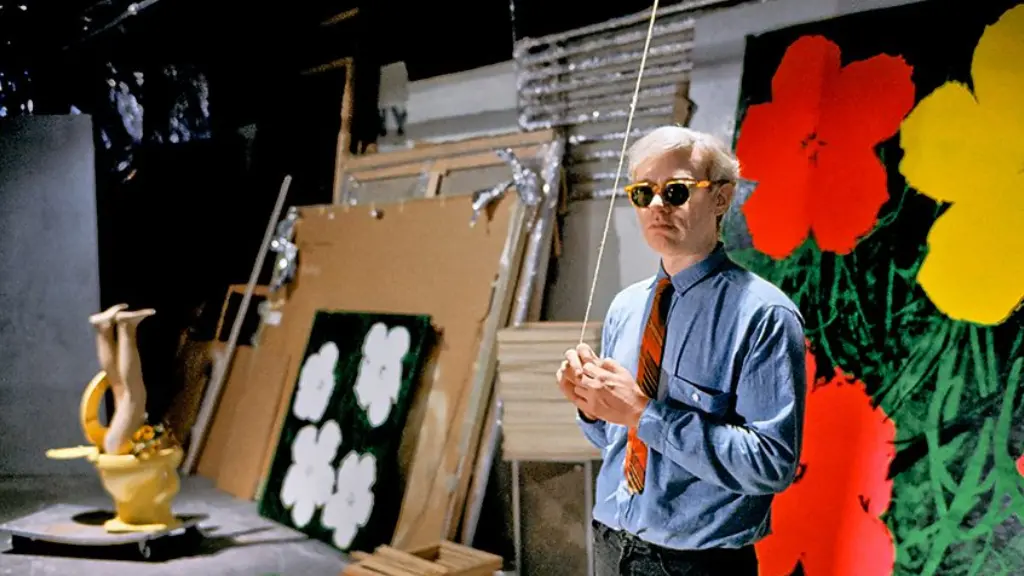Andy Warhol was more than just the silver-haired icon of the pop art movement—he was a paradox, a master of reinvention, and a man who blurred the line between reality and performance. Instantly recognizable yet intensely private, Andy Warhol left behind a legacy that continues to challenge how we define art, fame, and authenticity.
The Rise of Andy Warhol: From Pittsburgh to Pop Art Pioneer
Born in 1928 in Pittsburgh, Pennsylvania, Andy Warhol grew up in a working-class Slovak immigrant family. A frail child plagued by illness, Warhol spent much of his youth at home, where he developed a fascination with celebrity magazines and pop culture, early hints of the themes that would later dominate his work. He attended the Carnegie Institute of Technology (now Carnegie Mellon University), where he honed his skills in commercial art before moving to New York City in 1949.
In New York, Warhol quickly made a name for himself as a successful commercial illustrator, creating whimsical ads for top magazines and department stores. But his true ambition lay in fine art, and by the early 1960s, Andy Warhol was reinventing himself—and art history. His early pop works, including the now-iconic Campbell’s Soup Cans, introduced a new visual language that merged mass production with personal expression.
Creating the Legend: How Andy Warhol Built His Persona
Andy Warhol didn’t just make art—he became art. With his signature silver wig, dark glasses, and affectless speech, Warhol cultivated a persona as enigmatic as it was calculated. His studio, The Factory, became a creative hub and cultural phenomenon, attracting celebrities, drag queens, musicians, and socialites. It was a place where art, fame, and experimentation collided.
Warhol played the media like an instrument. In interviews, he often gave cryptic, repetitive answers, hiding his inner thoughts behind a mask of detachment. He famously said, “I want to be a machine,” signaling his embrace of industrial processes like screen printing and his desire to eliminate the personal from the artistic.
But the persona was a performance. Andy Warhol was deeply involved in every aspect of his image, carefully managing how he appeared in public while keeping his true self out of sight.
Beyond the Canvas: Andy Warhol’s Philosophies and Passions
Despite his surface-level obsession with consumerism and celebrity, Andy Warhol was deeply philosophical. He questioned the meaning of originality, authorship, and value in an age of mass production. By turning everyday objects—Coca-Cola bottles, soup cans, Brillo boxes—into art, he challenged the elitism of the art world and democratized visual culture.
Surprisingly, beneath the glamor and irony, Warhol was also a devout Catholic. He attended Mass regularly, volunteered at homeless shelters, and supported his church—all quietly and without fanfare. His later works, including depictions of the Last Supper and crucifixion scenes, reflected a deeper spiritual undercurrent rarely discussed in mainstream accounts of his life.
In private, Andy Warhol struggled with questions of mortality, fame, and meaning. His diaries, published posthumously, reveal a man who was far more thoughtful and conflicted than his public image suggested.
Controversies and Complexities of Andy Warhol’s Career
Warhol’s rise was not without critics. Many accused him of being superficial or manipulative, more interested in shock value than substance. He was often dismissed by traditionalists who saw his work as commercial rather than conceptual. Yet this criticism only reinforced Warhol’s point—he held a mirror to a society obsessed with fame and consumption.
In 1968, Warhol survived an assassination attempt by Valerie Solanas, a radical feminist writer and one-time Factory associate. The shooting marked a turning point. After recovering from near-fatal injuries, Warhol became more withdrawn and cautious. His work, too, took on darker, more introspective themes, though his celebrity continued to rise.
The Lasting Influence of Andy Warhol
Today, Andy Warhol remains one of the most influential artists in history. His legacy lives on in countless ways—from the work of contemporary artists like Jeff Koons and Takashi Murakami to the continued relevance of his commentary on media and identity.
Warhol anticipated the rise of influencer culture, reality TV, and the obsession with self-image. His famous quote, “In the future, everyone will be world-famous for 15 minutes,” now reads like a prophecy in the age of TikTok and Instagram.
The Andy Warhol Museum in Pittsburgh, the largest museum in the U.S. dedicated to a single artist, continues to draw visitors from around the world, preserving his art, films, photographs, and personal artifacts.
Conclusion
Andy Warhol was never just one thing. He was a commercial artist and a visionary. A devout Catholic and a provocateur. A public figure who hid in plain sight. To understand him is to accept that contradiction is part of the package.
Who was the real Andy Warhol? Perhaps even he didn’t fully know. But what he left behind is clear—a body of work and a cultural impact that continues to shape how we see art, fame, and ourselves.
Don’t miss out! Check back often for fresh recommendations and trending series.
